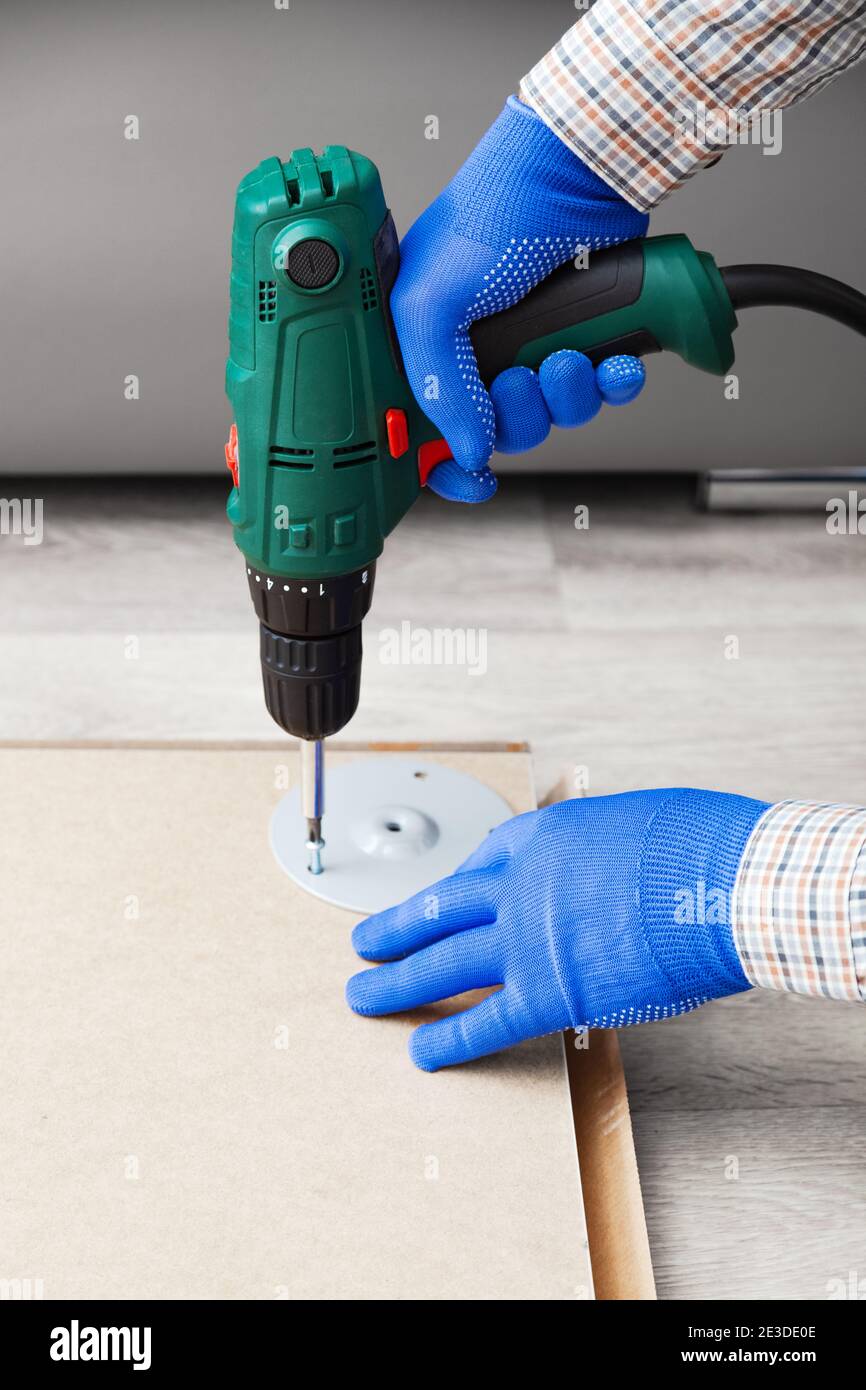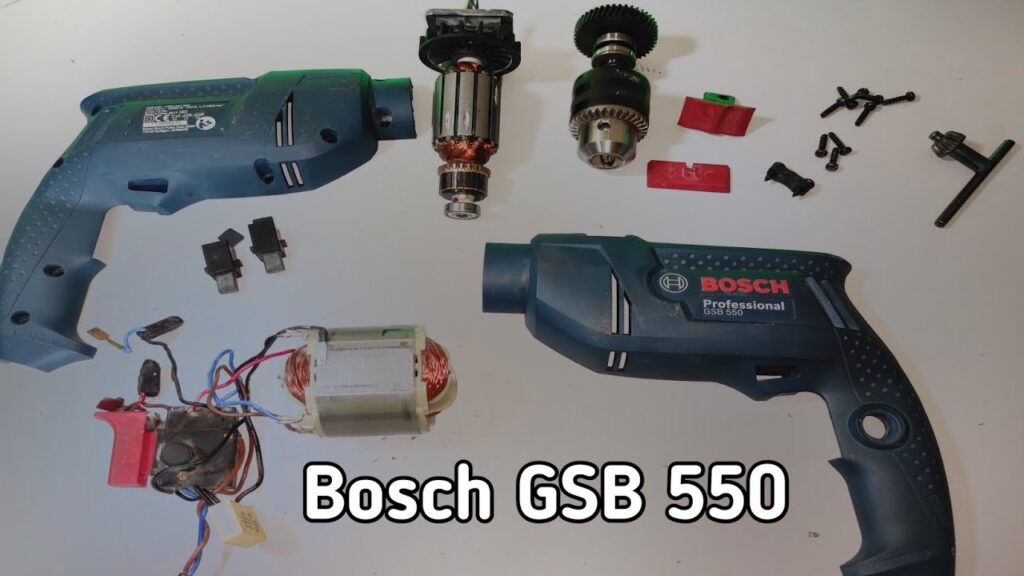Assembling a drill machine might seem daunting at first. But, it’s easier than you think.
Drill machines are essential tools for many DIY projects. Knowing how to assemble one can save you time and money. This guide will walk you through the process step-by-step. Whether you’re a beginner or have some experience, this introduction will help you get started.
Understanding the parts and their functions is crucial. With clear instructions and a little patience, you’ll have your drill machine ready in no time. So, let’s dive in and see how to assemble a drill machine efficiently and safely. By the end, you’ll feel confident using your newly assembled tool.

Credit: www.ebay.com
Safety Precautions
Assembling a drill machine can be an engaging task. But safety should be your top priority. Proper safety precautions ensure you avoid injuries and accidents. This section will guide you through essential safety steps.
Protective Gear
Wearing the right gear is crucial. Start with safety goggles to protect your eyes from debris. Gloves are essential for hand protection. They prevent cuts and scrapes. Earplugs can help protect your hearing from loud drilling noises.
Here is a simple table for quick reference:
| Protective Gear | Purpose |
|---|---|
| Safety Goggles | Protect eyes from debris |
| Gloves | Prevent cuts and scrapes |
| Earplugs | Shield ears from loud noises |
Workspace Preparation
Prepare your workspace to avoid accidents. Ensure the area is well-lit. A well-lit area helps you see clearly and avoid mistakes. Remove clutter to create a safe working environment. Organize your tools so you can reach them easily.
Follow these steps for a safe workspace:
- Ensure adequate lighting.
- Clear the workspace of clutter.
- Organize tools for easy access.
Keep a fire extinguisher nearby. It’s crucial for emergencies. Ventilate the area if working with materials that produce fumes. Safety should always come first.
Unboxing The Drill Machine
Unboxing a new drill machine can be an exciting experience. This is the first step toward starting your project. You might feel eager to get started right away. But, taking a moment to check the contents and inspect for damage is crucial. It ensures your drill machine is ready to use.
Checking The Contents
First, open the box carefully. Make sure you do not damage anything inside. Take out the manual and read it. Next, check if all the parts listed in the manual are present. This includes the drill, battery, charger, and any accessories. Missing parts can hinder your work. Confirm everything is there before proceeding.
Inspecting For Damage
After checking the contents, inspect each part for damage. Look for cracks, dents, or any other signs of damage. Pay special attention to the drill and battery. Damaged parts can be unsafe. If you find any issues, contact the seller immediately. Ensuring everything is in good condition is key to a smooth project.
Assembling The Main Components
Assembling a drill machine is easy if you follow the right steps. It’s important to understand each component and its function. This section will guide you through the process of assembling the main components of your drill machine.
Attaching The Handle
First, locate the handle in your drill kit. The handle is crucial for maintaining control during use.
- Align the handle with the designated slot on the drill body.
- Gently slide the handle into the slot until it clicks in place.
- Tighten any screws or bolts provided to secure the handle firmly.
Make sure the handle is secure. A loose handle can lead to accidents.
Securing The Chuck
The chuck holds the drill bit in place. Properly securing it ensures safe and effective drilling.
- Open the chuck by turning it counterclockwise.
- Insert the drill bit into the chuck.
- Turn the chuck clockwise to tighten it around the drill bit.
- Use the chuck key to give it an extra turn, ensuring it’s tight.
Always double-check the chuck. The drill bit should not wobble or move.
Installing The Drill Bit
Installing the drill bit is a crucial step in using a drill machine. It ensures you achieve precise and clean holes in your materials. This section will guide you through choosing the right bit and inserting it properly.
Choosing The Right Bit
Selecting the correct drill bit is vital for the task at hand. Different materials require different bits. Here are some common types:
- High-Speed Steel (HSS) Bits: Ideal for wood, plastic, and softer metals.
- Carbide-Tipped Bits: Best for drilling into masonry and concrete.
- Brad Point Bits: Perfect for precise wood drilling.
- Auger Bits: Designed for deep wood holes.
Match the bit to your material for optimal performance. A wrong choice can damage your drill or material.
Proper Bit Insertion
Inserting the drill bit correctly is essential for safety and efficiency. Follow these steps:
- Unplug the Drill: Ensure the drill is off and unplugged for safety.
- Open the Chuck: Rotate the chuck counterclockwise to open the jaws.
- Insert the Bit: Place the drill bit inside the chuck. Make sure it’s centered.
- Tighten the Chuck: Turn the chuck clockwise to secure the bit. Use a chuck key if needed.
- Test the Bit: Give the bit a gentle pull to ensure it’s firmly in place.
A well-inserted bit ensures a smooth drilling experience. It also prevents accidents and bit slippage.
Powering The Drill Machine
Powering your drill machine is a crucial step. You need to ensure it is ready for use. Understanding how to connect it to a power source and install the battery will help. Let’s dive into these steps.
Connecting To Power Source
First, locate the power cord. It is usually attached to the back of the drill. Check for any damage on the cord. Plug the cord into a nearby power outlet. Make sure the outlet is safe and functional. Test the drill by pressing the trigger. The drill should start immediately.
Battery Installation
If your drill is cordless, you will need to install the battery. Find the battery compartment. It’s typically at the handle’s base. Open the compartment gently. Align the battery with the slots. Slide the battery into place. Ensure it clicks securely. Close the compartment cover. Your drill is now ready for use.
Testing The Drill Machine
Testing the drill machine ensures it works correctly. It helps identify any issues early. Follow these steps to test your drill machine effectively.
Initial Test Run
Plug in your drill machine. Ensure the power switch is off before plugging it in. Hold the drill firmly in your hand. Turn on the power switch.
Listen for any unusual sounds. The drill should run smoothly. If you hear grinding or clicking, turn off the machine. Check for any loose parts. Tighten them if needed.
Adjusting Speed Settings
Start with the lowest speed setting. Turn on the drill and test it. Increase the speed gradually. Observe how the drill responds.
Higher speeds are for harder materials. Lower speeds are for softer materials. Find the right speed for your task. Always test the drill on a scrap piece first.
Maintenance Tips
Maintaining your drill machine ensures its longevity and efficiency. Regular upkeep prevents breakdowns and costly repairs. Follow these simple tips to keep your drill machine in top shape.
Regular Cleaning
Cleaning your drill machine is essential. Dust and debris can clog the motor and vents. Use a soft brush or a dry cloth to wipe down the exterior.
- Remove the drill bit before cleaning.
- Use compressed air to clean vents and crevices.
- Check the chuck for any trapped debris.
Ensure the machine is unplugged before you start cleaning. This prevents accidents and keeps you safe.
Lubrication And Storage
Lubrication keeps the moving parts of your drill machine smooth. It reduces friction and wear.
- Apply a few drops of machine oil to the chuck.
- Lubricate the gears as per the manufacturer’s instructions.
- Wipe off any excess oil with a clean cloth.
Proper storage is just as important. Store your drill in a cool, dry place. Avoid damp areas to prevent rust.
| Maintenance Task | Frequency |
|---|---|
| Cleaning | After each use |
| Lubrication | Monthly |
| Storage | After each use |
Following these simple maintenance tips will keep your drill machine running smoothly. A well-maintained tool is a reliable tool.

Credit: m.youtube.com
Troubleshooting Common Issues
Assembling a drill machine can sometimes lead to common issues. These issues can hinder performance and cause frustration. This section addresses common problems and offers simple solutions.
Overheating Problems
Overheating can damage your drill machine. It often results from prolonged use. Give the machine regular breaks. This allows it to cool down.
Check the ventilation slots. Ensure they are not blocked. Clear any dust or debris. This helps maintain airflow.
Use the correct drill bit for your task. Using the wrong bit can strain the motor. This leads to overheating.
Bit Jamming Solutions
Bit jamming is another common issue. It can occur if the bit is not properly secured. Always tighten the chuck securely.
Inspect the bit for wear. A worn bit can cause jamming. Replace it if necessary.
If the bit jams, stop the machine immediately. Reverse the drill’s direction. This can help dislodge the bit.
Ensure the material you are drilling is stable. Movement can cause the bit to jam. Secure the material before drilling.

Credit: www.alamy.com
Frequently Asked Questions
How Do I Start Assembling A Drill Machine?
Begin by laying out all the parts. Read the manual carefully. Follow each step systematically.
What Tools Are Needed To Assemble A Drill?
You will need a screwdriver, wrench, and pliers. These tools help in tightening screws and bolts.
How Long Does It Take To Assemble A Drill?
Typically, it takes about 30 minutes. This depends on your experience and the complexity of the drill.
Are There Safety Precautions When Assembling A Drill?
Yes, always wear safety gloves and goggles. Ensure the power source is disconnected while assembling.
Conclusion
Assembling a drill machine can be simple and straightforward. Follow each step carefully. Ensure all parts fit properly. Double-check connections and tighten screws securely. Your drill machine will work efficiently when assembled correctly. Always prioritize safety throughout the process. Now, you are ready to tackle your projects with confidence.
Happy drilling!
